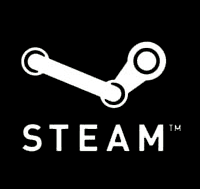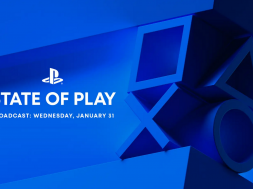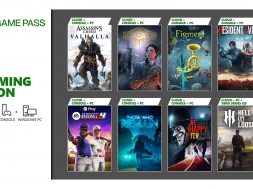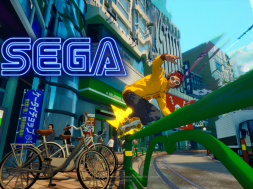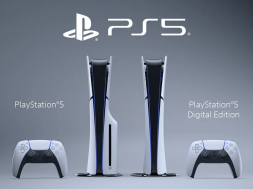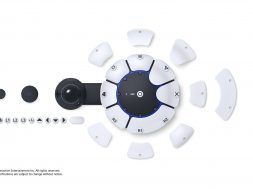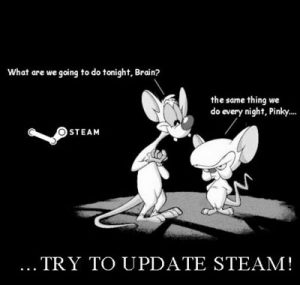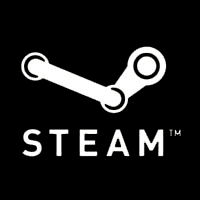
Rocky Road
Steam was first made available for download to the public in 2002 while Counter Strike 6.1 was in its beta testing phase. Steam was not a necessity for beta play on Counter Strike 6.1, but around 80,000 players utilised the new platform during the beta period. There were some criticisms made at this stage, focusing not only on the Steam platform, but another platform Valve had worked on previously.
PowerPlay was a joint venture by both Steam and Cisco systems in an effort to eliminate latency between players playing online. PowerPlay was, ultimately, a failure, and some believed Steam would soon follow.
Not everyone was full of praise for its new DRM system, either. Some were criticising it for lack of some things they felt were basic functionality, such as offline play. On release Steam had no allowance for players who had no internet connections to log into their accounts and validate their DRM.
Some even anticipated the inevitable server overload issues Steam eventually suffered. Even their version control was criticised for being too fricative.
Steam seemed to be putting a lot of its hopes in modders. A number of mods were made available soon after the beta download was available to the public, but, Day of Defeat seemed to prove that it could be done. Upon its release in February 2002 the mod attracted more online players than almost any other online action game, with the exception of Valve’s own Counter Strike. It was more popular than titles like Medal of Honour, for example.
Though the software seemed promising, the launch did not go as smoothly as hoped. It was plagued with bugs and poor download speeds due to choked bandwidth. Steam was mocked and complained about on forums all over the internet as angry gamers took out their frustration on the young software. Early adopters, including a few who had obtained Steam as part of a leak, did not have as many problems, but some couldn’t even launch the platform on their computers. Even if they could get it online, they faced slow download speeds with some updates in the region of 350MB (Which was a lot to download at the time).
Although it received a lot of negative press from Half-Life players, most of Steam’s problems by late 2003 were greatly exaggerated but had gained enough momentum for an online petition for Valve to get rid of Steam. The up-take was slow, but with the promise of Half-Life 2 on the horizon, Steam generated more and more momentum. By then there were over 300,000 users on Steam, and more were set to come as Valve looked to convert the entire Half-Life player-base. It was confirmed that online players of Half-Life would need Steam to play the latest version of the game.
Although online feedback from gamers was mixed, Steam was winning over developers, including Strategy First, gradually as more and more games were being added throughout 2004 and 2005. This was aided by the release of Half-Life 2, which relied on Steam completely to be played, causing another boost to Steam’s user numbers. Many developers were tempted by its easy updating system and DRM, as well as its grasp on Half-Life’s fanbase.
Indie Heaven
Some people today may not realise it but there was a relatively strong indie games market on PC before the majority turned to Smartphones, and that was all thanks to Steam. Valve wanted as many developers to be able to follow in their footsteps and publish digitally without the hassle of pitching their games to publishers. Steam actively sought out a number of Indie developers to attract more and more of them to the platform.
The best way for Indie games and developers to get recognised back then was by publishing through Steam. They would receive the same audience that big name titles released on the platform would receive, but Indie games are often cheaper than their triple A rivals.
The Best Form of Flattery
Following the moderate success of the Steam platform, a number of other companies, including Microsoft, one of the companies Valve had approached to develop the platform, began to release their own digital games distribution Systems. Microsoft launched the Xbox Games Store for the Xbox 360 in 2005 and extended it to the PC in 2008. Though not competing directly with Steam on release, the platform shared a lot in common. It allowed downloads of published games and provided a distribution platform for developers, though it was heavily criticised for its DRM system linking games to specific consoles. This DRM system was upgraded in 2008 to allow the user to transfer games licenses to other consoles if they needed to purchase another one.
Sony released the Playstation Store for the PS3 in 2006, working in a similar way to the Xbox Store, though without the flawed DRM system. It allowed users to download their purchased games/add-ons multiple times up to a limit. This could even be used to download booster packs for games onto someone else’s console, allowing it to be used in multiple consoles for multiple people at the same time.
In 2011 the games publisher EA launched their Origin platform. Though previous EA titles had been published and delivered through Steam, EA decided to develop their own online publishing tool for PC games. This was the first time that a game had to be pulled from Steam, Crysis 2 was removed. In a statement from EA, it was said that Valve had removed the game from Steam as a result of their “business terms”. There have been multiple titles advertised by EA as being “Origin exclusive” only to appear on Steam at a later date. It was clear that EA wanted to distance Origin from Steam as much as possible.
Conclusion
Microsoft attempted to bring out a DRM system similar to Steam for consoles (In the xBox One), but in the midst of a backlash, and numerous complaints, the DRM system was dropped in favour of the one we have always known until now. One has to wonder what Steam would be today if they had followed the same steps? From rocky beginnings Steam has chugged on, despite its criticisms, to be an icon of PC gaming. Though its history may be a mixed one, the future it paints for PC gaming today is a bright one. With the release of the Linux based Steam OS and the Steam Box running said OS in the future, its competition must be getting worried, and with features like Family sharing in its Beta stage, it’s no doubt that Steam will continue to roar on as a giant of Digital Distribution Systems.
[Words, Hugh O’Higgins]
Steam was first made available for download to the public in 2002 while Counter Strike 6.1 was in its beta testing phase. Steam was not a necessity for beta play on Counter Strike 6.1, but around 80,000 players utilised the new platform during the beta period. There were some criticisms made at this stage, focusing not only on the Steam platform, but another platform Valve had worked on previously.
PowerPlay was a joint venture by both Steam and Cisco systems in an effort to eliminate latency between players playing online. PowerPlay was, ultimately, a failure, and some believed Steam would soon follow.
Not everyone was full of praise for its new DRM system, either. Some were criticising it for lack of some things they felt were basic functionality, such as offline play. On release Steam had no allowance for players who had no internet connections to log into their accounts and validate their DRM.
Some even anticipated the inevitable server overload issues Steam eventually suffered. Even their version control was criticised for being too fricative.
Steam seemed to be putting a lot of its hopes in modders. A number of mods were made available soon after the beta download was available to the public, but, Day of Defeat seemed to prove that it could be done. Upon its release in February 2002 the mod attracted more online players than almost any other online action game, with the exception of Valve’s own Counter Strike. It was more popular than titles like Medal of Honour, for example.
Though the software seemed promising, the launch did not go as smoothly as hoped. It was plagued with bugs and poor download speeds due to choked bandwidth. Steam was mocked and complained about on forums all over the internet as angry gamers took out their frustration on the young software. Early adopters, including a few who had obtained Steam as part of a leak, did not have as many problems, but some couldn’t even launch the platform on their computers. Even if they could get it online, they faced slow download speeds with some updates in the region of 350MB (Which was a lot to download at the time).
Although it received a lot of negative press from Half-Life players, most of Steam’s problems by late 2003 were greatly exaggerated but had gained enough momentum for an online petition for Valve to get rid of Steam. The up-take was slow, but with the promise of Half-Life 2 on the horizon, Steam generated more and more momentum. By then there were over 300,000 users on Steam, and more were set to come as Valve looked to convert the entire Half-Life player-base. It was confirmed that online players of Half-Life would need Steam to play the latest version of the game.
Although online feedback from gamers was mixed, Steam was winning over developers, including Strategy First, gradually as more and more games were being added throughout 2004 and 2005. This was aided by the release of Half-Life 2, which relied on Steam completely to be played, causing another boost to Steam’s user numbers. Many developers were tempted by its easy updating system and DRM, as well as its grasp on Half-Life’s fanbase.
Some people today may not realise it but there was a relatively strong indie games market on PC before the majority turned to Smartphones, and that was all thanks to Steam. Valve wanted as many developers to be able to follow in their footsteps and publish digitally without the hassle of pitching their games to publishers. Steam actively sought out a number of Indie developers to attract more and more of them to the platform.
The best way for Indie games and developers to get recognised back then was by publishing through Steam. They would receive the same audience that big name titles released on the platform would receive, but Indie games are often cheaper than their triple A rivals.
Following the moderate success of the Steam platform, a number of other companies, including Microsoft, one of the companies Valve had approached to develop the platform, began to release their own digital games distribution Systems. Microsoft launched the Xbox Games Store for the Xbox 360 in 2005 and extended it to the PC in 2008. Though not competing directly with Steam on release, the platform shared a lot in common. It allowed downloads of published games and provided a distribution platform for developers, though it was heavily criticised for its DRM system linking games to specific consoles. This DRM system was upgraded in 2008 to allow the user to transfer games licenses to other consoles if they needed to purchase another one.
Sony released the Playstation Store for the PS3 in 2006, working in a similar way to the Xbox Store, though without the flawed DRM system. It allowed users to download their purchased games/add-ons multiple times up to a limit. This could even be used to download booster packs for games onto someone else’s console, allowing it to be used in multiple consoles for multiple people at the same time.
In 2011 the games publisher EA launched their Origin platform. Though previous EA titles had been published and delivered through Steam, EA decided to develop their own online publishing tool for PC games. This was the first time that a game had to be pulled from Steam, Crysis 2 was removed. In a statement from EA, it was said that Valve had removed the game from Steam as a result of their “business terms”. There have been multiple titles advertised by EA as being “Origin exclusive” only to appear on Steam at a later date. It was clear that EA wanted to distance Origin from Steam as much as possible.
Microsoft attempted to bring out a DRM system similar to Steam for consoles (In the xBox One), but in the midst of a backlash, and numerous complaints, the DRM system was dropped in favour of the one we have always known until now. One has to wonder what Steam would be today if they had followed the same steps? From rocky beginnings Steam has chugged on, despite its criticisms, to be an icon of PC gaming. Though its history may be a mixed one, the future it paints for PC gaming today is a bright one. With the release of the Linux based Steam OS and the Steam Box running said OS in the future, its competition must be getting worried, and with features like Family sharing in its Beta stage, it’s no doubt that Steam will continue to roar on as a giant of Digital Distribution Systems.
[Words, Hugh O’Higgins]
